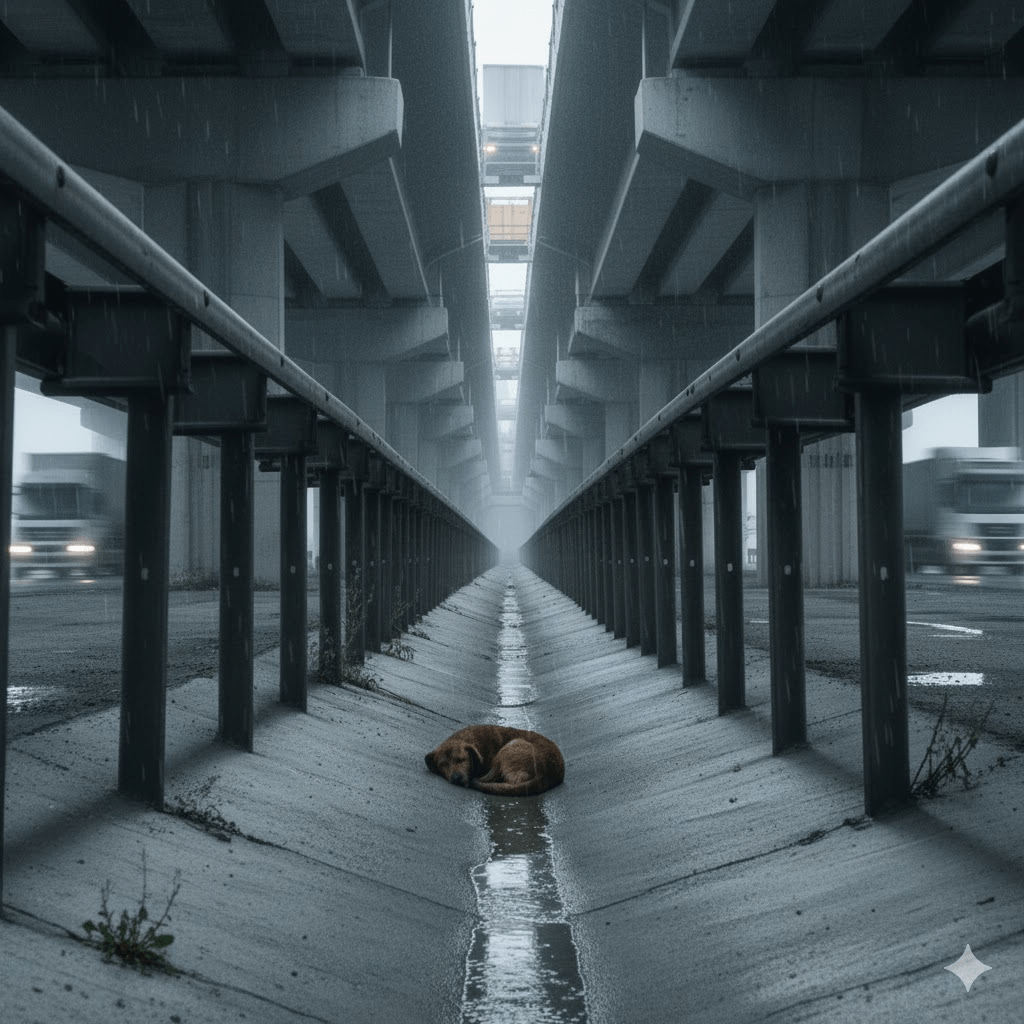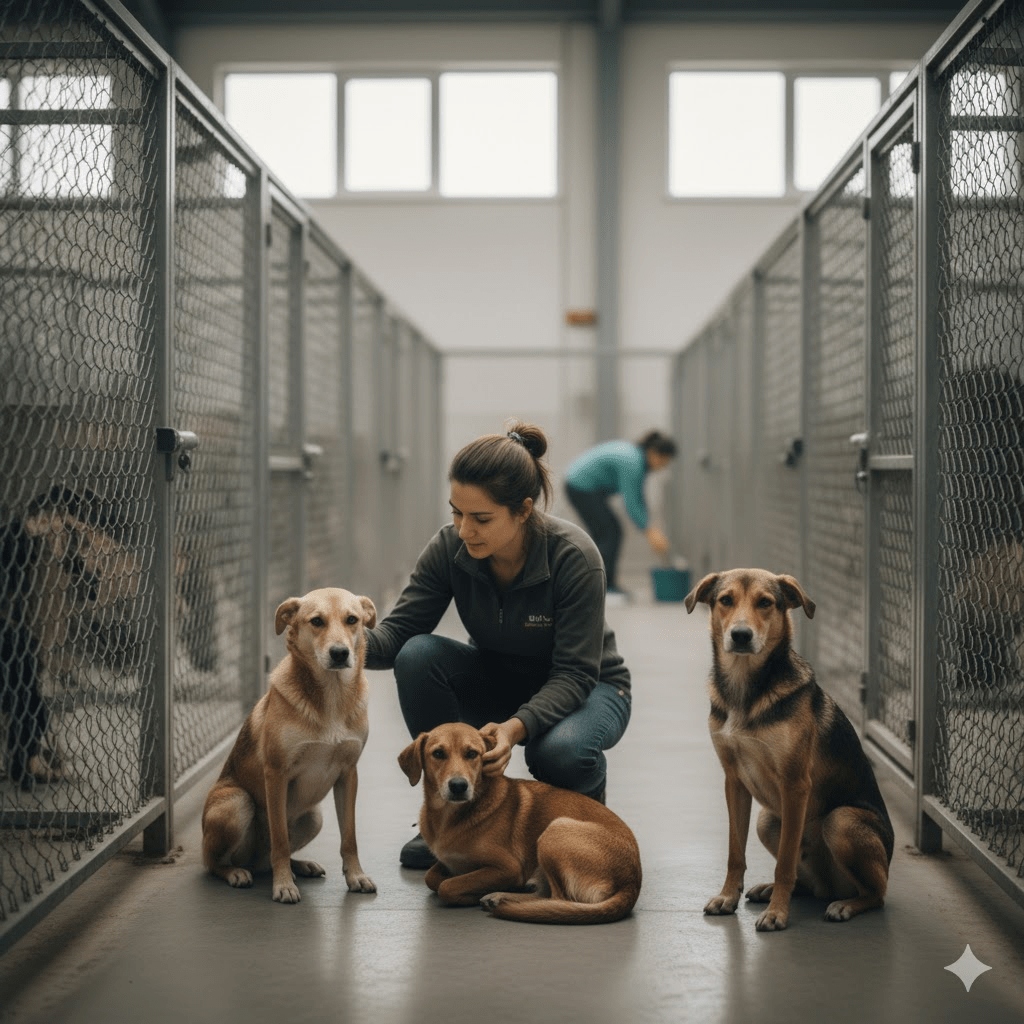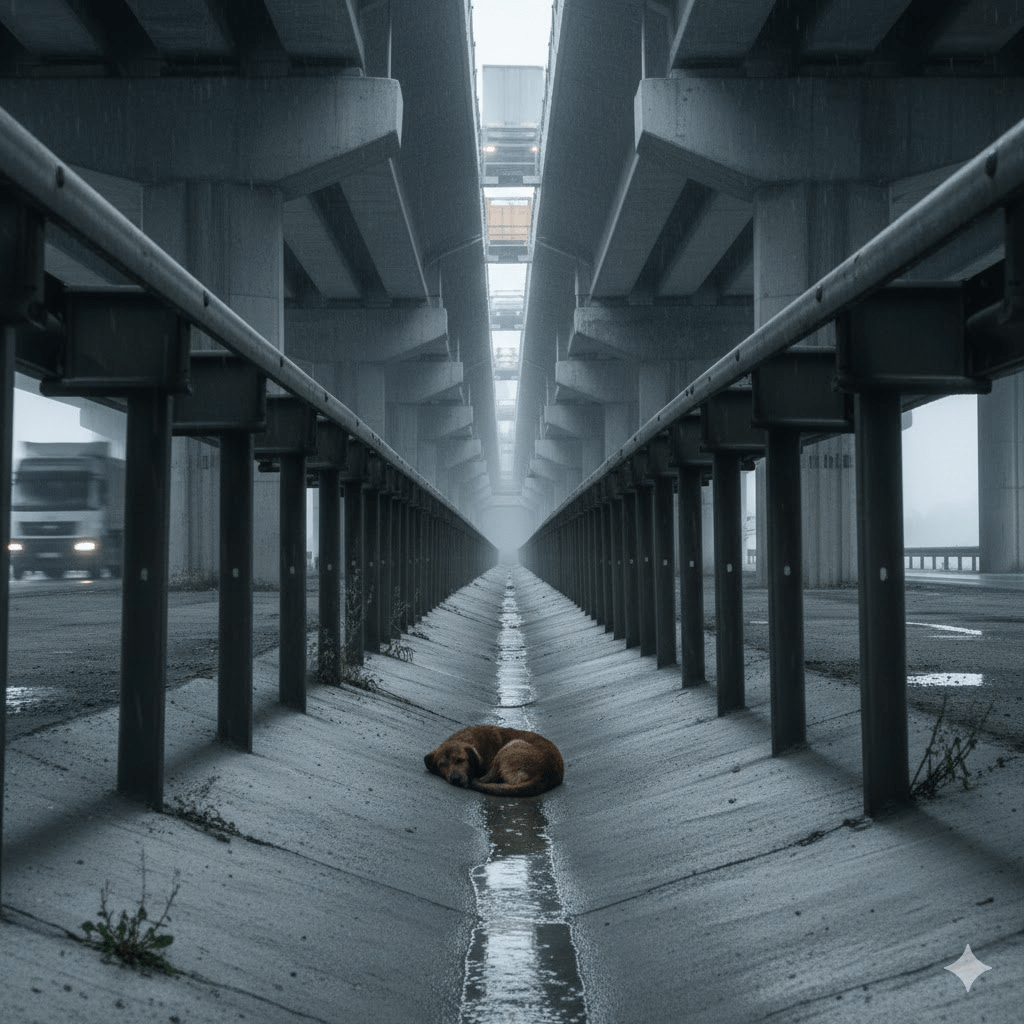The modern highway system, a marvel of engineering, represents connectivity, progress, and the relentless hum of human activity. Designed for speed and efficiency, these concrete arteries pulse with vehicles, carrying goods and people across vast distances. Yet, often overlooked amidst the rush are the silent sentinels, the forgotten inhabitants of the margins, whose lives intersect with these thoroughfares in poignant and sometimes perilous ways. The image before us captures a stark reality: a lone dog, its body curled in a posture of resignation or rest, nestled within the drainage channel of a highway overpass. This isn’t merely a stray animal; it’s a testament to the unforeseen consequences of our sprawling infrastructure, a living embodiment of resilience in the face of indifference, and a stark reminder that our built environments have an ecological and social footprint far beyond their intended purpose. The cold, utilitarian lines of the bridge railings, the damp concrete, and the distant, blurred traffic all contribute to an atmosphere of isolation. This single image compels us to look closer, to question the narratives we construct around development, and to acknowledge the myriad lives that persist, often unseen and unheard, within the very structures we create to define our civilization. It prompts a deeper inquiry into how our infrastructure impacts local wildlife, the ethics of animal welfare in urban and peri-urban environments, and the collective responsibility we bear for the creatures who share our rapidly expanding world.

Our highways, while facilitating incredible movement and economic growth, simultaneously create complex challenges for animal populations. They act as formidable barriers, segmenting habitats and disrupting natural migration patterns, leading to what ecologists refer to as “habitat fragmentation.” For animals like the dog in the image, these human-made landscapes can become both a sanctuary and a trap. The very design of overpasses and underpasses, while intended for vehicle flow, inadvertently offers shelter, often drawing animals seeking refuge from the elements or predators. However, these seemingly safe havens are frequently adjacent to fast-moving traffic, exposing animals to constant danger, noise pollution, and the risk of collisions. This precarious existence highlights a critical oversight in the initial planning and ongoing management of such infrastructure – a lack of comprehensive consideration for the non-human residents whose lives are irrevocably altered by these massive construction projects.

The phenomenon of animals living in close proximity to highways is not unique to dogs. A diverse array of wildlife, from small rodents and birds to larger mammals like foxes and deer, adapt to or are displaced into these environments. The availability of discarded food from passing vehicles, albeit often unhealthy, can attract scavengers, further entrenching their presence near dangerous traffic. This symbiotic yet hazardous relationship underscores the need for proactive environmental planning that extends beyond the immediate human benefit. Designing infrastructure with “wildlife crossings” or “ecoducts” can mitigate fragmentation, allowing animals safe passage beneath or above highways, thereby reducing roadkill and maintaining ecological connectivity. Such measures demonstrate an evolving understanding of our role in the ecosystem and a commitment to shared spaces.

This particular image of the dog in the drainage channel also speaks to the broader issue of companion animal welfare in an increasingly urbanized world. Many dogs found in such predicaments are either abandoned or have strayed from homes, finding themselves disoriented and vulnerable in unfamiliar, hostile environments. Their presence near highways is often a desperate act of survival, driven by hunger, fear, or the search for warmth and shelter. This highlights the critical need for responsible pet ownership, comprehensive animal control programs, and community support systems for strays. Animal shelters and rescue organizations often work tirelessly to retrieve and rehabilitate these animals, offering them a second chance at a safe life away from the perils of the roadside.

Community engagement plays a vital role in addressing these challenges. Raising awareness about the plight of roadside animals, encouraging responsible pet ownership, and supporting local animal welfare initiatives can make a tangible difference. Education campaigns can inform drivers about the dangers of feeding wild animals near highways, which can inadvertently draw them into hazardous areas. Furthermore, fostering a culture of empathy and vigilance among commuters can lead to earlier detection of animals in distress, prompting calls to authorities or animal rescue services that can intervene before a tragic incident occurs.







